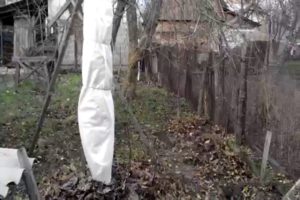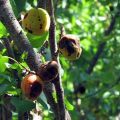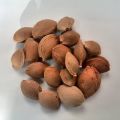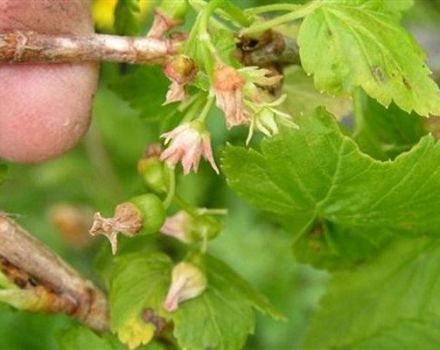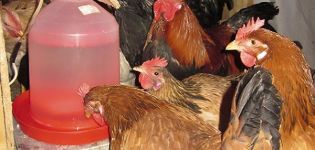How to properly grow and care for apricots in Siberia and a description of frost-resistant varieties
Growing apricots in Siberia is problematic. The Siberian climate is not suitable for the cultivation of this thermophilic crop, so it is not always possible to grow a tree the first time. But if you make every effort, growing an apricot tree is quite possible.
Apricot variety for Siberia
Apricot varieties for Siberia:
- One of the best varieties for growing in Siberia is the Sayan hybrid. The tree is undersized, it grows no more than 3 m in height. The flowering period begins in May. Up to 15 kg of fruits are harvested from one adult tree. The berry mass is 20 g.
- Gorny Abakan is a low-growing variety, reaching a height of about 3 m. The main advantage of the variety is frost resistance. Berries weighing from 20 to 35 g. The shade of the skin is orange with a slight red blush.
- Another versatile variety of apricots for growing in Siberia is the Northern Lights. A self-infertile hybrid, pollinating plants are planted nearby to pollinate the inflorescences. The tree is compact, low. Fruits weighing 20-35 g. Up to 20 kg of yield are harvested from an adult plant.
- East Siberian - an early variety, flowering begins in the first half of May. Apricots ripen in the second decade of July. Productivity from 10 to 15 kg.
There are not so many varieties of apricots for cultivation in the Siberian regions. Due to the climatic conditions, growing an apricot tree is quite problematic.
Choosing a landing site
Find a place in Siberia for planting apricots more difficult than in the south due to the peculiarities of the climate. It is recommended to plant apricot trees in partial shade, in areas protected from cold winds. Planting trees in the sun is undesirable due to the fact that in the spring the buds begin to swell early, and when the spring frosts return, they will die.
It is undesirable to plant seedlings in the lowlands where water accumulates. Plants are undemanding to the composition of the soil and can grow on any type of soil.
Plants prefer to grow on loose, fertile soils. If the soil is infertile, then more fertilizer should be applied to it before planting the seedling.
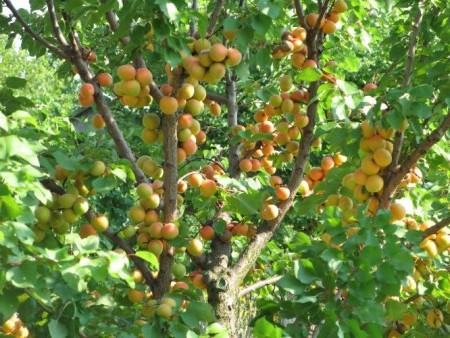
Landing technology
Planting apricots in Siberia is not much different from planting seedlings in other regions. Apricots are thermophilic plants that rarely survive freezing winters. Therefore, it depends on the correct technique of planting seedlings whether the tree freezes in winter or not.
Planting apricots in Siberia:
- Dig a hole at least 50 cm deep, the width of the hole should also be at least 50 cm and no more than 80 cm.
- The pit is covered with manure, superphosphate, potassium sulfate in a ratio of 10 liters x 500 g x 500 g.
- Mix the fertilizers with the ground.
- Saplings should be planted a few weeks after fertilization so that the soil is saturated with useful substances.
- After 2-3 weeks, the seedling is planted.
- The tree is placed in a hole, the roots are straightened and soil is buried.
- The root collar is left on the surface 5 cm from the soil.
- Tamp the soil around the trunk and pour plenty of warm water.

In Siberia, it is recommended to plant apricot seedlings in the spring with the onset of heat, when the threat of night frosts has passed. A stake is placed next to a young seedling and a trunk is tied to it. If the hole is in a lowland, then you need to make good drainage so that the water does not stagnate and the soil is not waterlogged.
Tree care
Growing apricots in the southern regions, they do not spend much time on leaving. But if you plant plants in Siberia, you will have to take care of the tree a lot. Since northern latitudes are not suitable for growing a plant, you have to always be on the lookout so that the tree does not die.
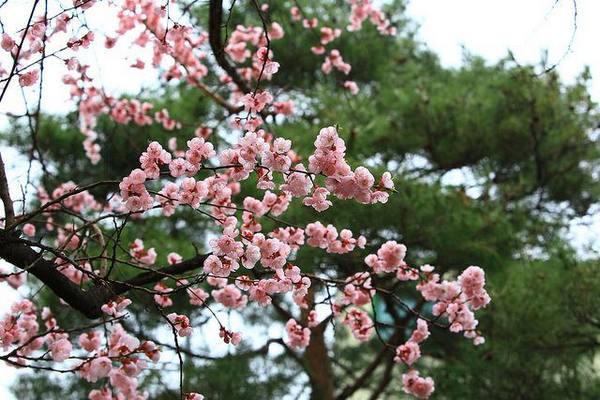
Watering and fertilizing
The frequency of watering an apricot depends on a number of factors, which include:
- The age of the tree.
- The growing season.
- Climatic conditions.
- Soil structure.
Young trees need watering more than old ones. The first watering is carried out in April, when the shoots bloom. The second time the apricots are watered when the inflorescences bloom and at the end of this period. The third time - a few weeks before the start of fruit ripening. And the last watering takes place in October. Before watering, the soil is loosened and all weeds are removed.
Another important aspect in the care of apricot trees is the introduction of mineral and organic fertilizing. Apricots are fed in spring, summer and autumn.
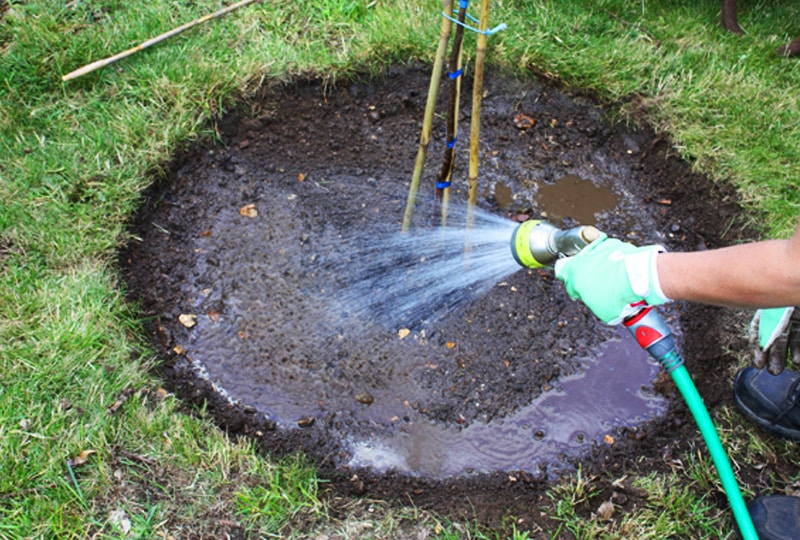
In spring, the plant is fed with nitrogen-containing fertilizers that promote growth. Such fertilizers are applied to the soil next to the trunk. The first time nitrogen is fed during flowering and the second time after flowering. Organic matter is added to the last feeding along with nitrogen. In summer, foliar feeding is preferred. Plants also require nitrogen during the summer. The leaves are sprayed with nitrogen-containing fertilizers.
With the onset of July, feeding should be complex. And in August, preference should be given to organic.
In the fall, feeding is aimed at preparing for the winter. In the autumn period, mineral fertilizers are applied. In order for the apricot to survive the harsh winter, less phosphorus, potassium and calcium are added to the soil. To saturate the soil with potassium and phosphorus, the soil around the trunk is covered with wood ash. Chalk or special complex fertilizers are used to saturate the earth with calcium. It is not recommended to introduce nitrogen-containing dressings, as they promote growth activation.
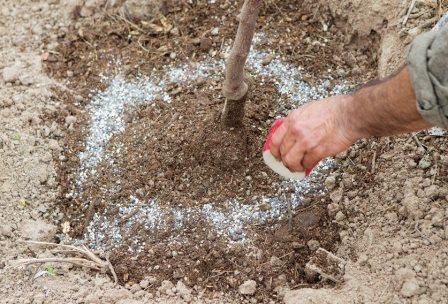
Diseases and pests of apricot and the fight against them
Common diseases of apricot are fungal diseases:
- Cytosporosis of stone fruits. It is necessary to cut off dry branches in a timely manner; at an early stage of the disease, the plants are sprayed with a solution of Bordeaux liquid or copper-containing chemicals.
- Bacterial necrosis. At the first sign of illness, damaged branches are removed and burned. Sections are treated with a solution of copper sulfate. As a preventive measure, every spring is sprayed with a solution of Bordeaux liquid.
- Monilial burn. To prevent the development of the disease, dried fruits are promptly removed. When the buds begin to swell, the trees are treated with a solution of Bordeaux liquid. At the first signs of a burn, apricots are treated with Strobi or Topaz preparations.
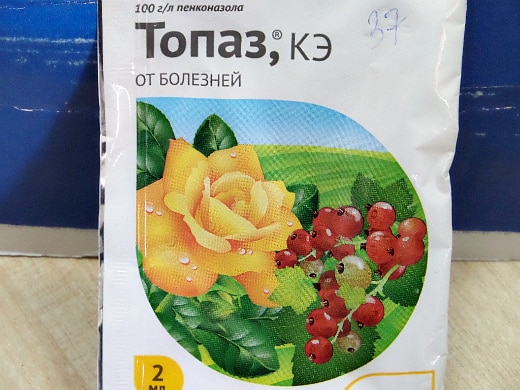
Pests of apricot trees include aphids, moths and leafworms. Spraying apricots with soapy water helps keep insects away. In addition, the drugs "Chlorophos", "Fitoverm" and "Entobacterin" are effective. As a preventive measure, every year in the fall after harvesting, the soil around the trunks is dug up and weeds are removed.
Growing apricot from stone
To grow seedlings with seeds, you need to take only seeds from a healthy and productive tree. Before planting, the seeds are washed under water, soaked in water. Then they are dried and left in this form until the onset of spring.
With the onset of spring, the bones are soaked in water for a week. The water is changed periodically. Then the seeds are placed in wet moss or sawdust. The temperature in the room where the bones are located should be from +4 to +12 degrees.
Growing apricots in Siberia, they devote time to stratification. This stage takes 1-3 months. After the bone bursts and sprouts appear, they are planted in the soil outside. The sprouts are planted to a depth of 5-6 cm. If you take proper care of the sprouts, then after a year they are planted in a permanent place. Growing an apricot from a stone takes 1 to 3 years.
